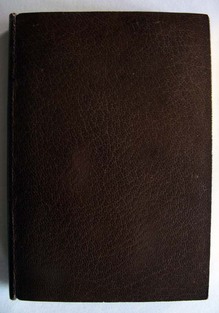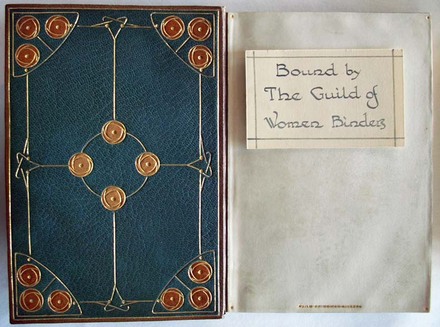This 1900 volume has a Jansenist style binding, in imitation of a style from a previous period. The Jansenist style was popular in the late seventeenth and early eighteenth centuries, characterized by a plain exterior and elaborately tooled doublures.
Both front and back boards are plain while the spine has a gold tooled title. Inside, the doublures are elaborately tooled color leather with a series of interlocked floral elements. The edges are gilt.
The term Jansenist binding is an allusion to the Jansenists, a Christian theological movement that emphasized original sin, human depravity, and the necessity of divine grace, originating from the writings of theologian Cornelius Otto Jansen (1585-1638).
“In the reign of Louis XIV, also, by sheer reaction against the leaden showiness of the fashion set by the king, that there arose the simple style of binding called after Jansen, and adopted by the sect of Port Royal. The Jansenists bound their books soberly, with no gilding whatsoever on the sides, relying on the simple beauty of the leather in which their volumes were clad and decorating only the inside border, the dentelle, as it was called, from its resemblance to delicate lacework. These under decorated books were better bound in a technical sense than those of an earlier day.”
Dante Gabriel Rossetti (1828-1882), The Poetical Works of Dante Gabriel Rossetti (London: Ellis and Elvey, 1900). Graphic Arts Collection (GAX) 2011- in process.

